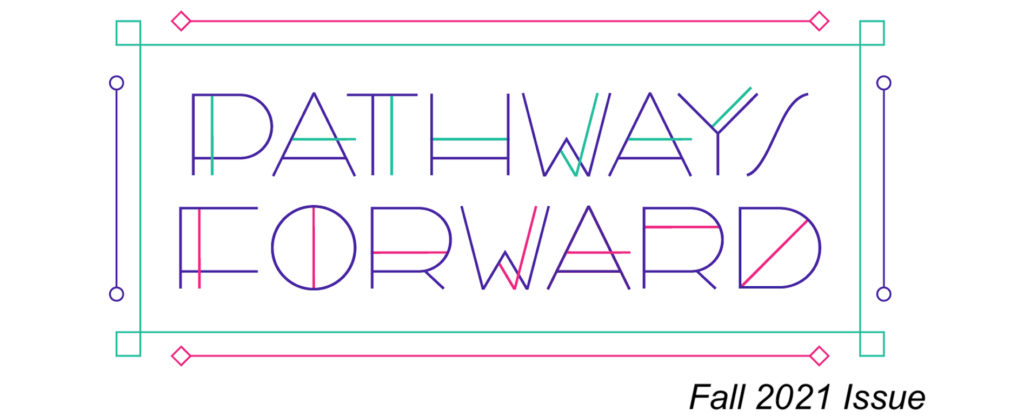
The Fall 2021 issue of the Urban Review seeks to envision new strategies, or pathways forward for existing in a world under continuous crisis. With the two-year mark of the onset of the COVID-19 pandemic quickly approaching, we find ourselves in a new reality where COVID has been added to the list of continuously looming crises facing our cities, our nation, and the world. Compounded with this is the mounting threat of climate change; this year we saw fires in the west, cold snaps and heat waves in the south, and storms and flooding in the east. The environmental, economic, and public health crises that stem from these events have disproportionally impacted low-income communities of color, posing questions about how cities will adapt to a future that will undoubtedly be filled with more of the same.
This semester marked the return to the classroom and in-person courses for Hunter College students; with it also came the beginning of a shift into the next phase of pandemic life and city living. As we shift away from the acute crisis of pandemic lockdowns and sheltering in place, and grapple with the ongoing reality of new variants, ever-changing CDC policies, evermore frequent extreme weather, and the proliferation of deepening disparities and inequities at the individual and community level, it is evident that temporary recovery efforts will no longer suffice. With these colliding crises in mind, the contributors to the Fall 2021 issue of the Urban Review examine potential pathways forward to address local and global crises and inequities, seeking solutions to build stronger, more equitable communities, cities, and nations.
Contributors to this issue suggest a variety of approaches to address the myriad problems we face today. Recovery strategies for addressing fall-out from COVID-19 were a common theme: In her interview with Jennifer Falk, Executive Director of the Union Square Partnership, Jennifer Reyes explores the potential of leveraging Business Industrial Districts (BIDs) to address challenges posed by the COVID-19 pandemic and the correlating economic crises. In her analysis of COVID recovery efforts, Samantha Banellis turns to a past crisis, examining the rebuilding of Lower Manhattan following the 9/11 attack on the Twin Towers and the lessons that those efforts can hold for New York City in its current pandemic recovery efforts.
Three authors examine facets of the built environment and urban economies: Jennifer Hendrick explores the economies of garage sales and their potential to reimagine value and use within our hyper-consumerist economy. Aleksander Miletic offers a convincing case for the importance of street vendors, demonstrating the critical role they play within urban economies and the challenges that the COVID-19 pandemic has posed for this largely immigrant workforce. In his piece on subgrade apartments, Craig Notte looks to the history of basement apartments in NYC, weighing the benefits of legalizing subgrade apartments to expand the City’s affordable housing stock against the challenges posed by the mounting threat of inland and coastal flooding across the city.
Other authors highlight strategies that center community-based and grassroots efforts. Fernando Tirado addresses the disparate impact of COVID-19 on communities in the Bronx, advocating for the importance of building community resilience in the quest for more adaptable communities and healthier cities. In his portrait of Smiling Hogshead Ranch in Long Island City, Trevor Lovitz provides a window into a radically different way of cultivating space and community within the urban landscape—brought richly to life with accompanying visuals by Nina Young and Frank Tomasso.
Together, these articles suggest that strategies for change can come at both the city and community level, that the quest to imagine new visions and plans for cities can begin with something as simple as a plot of un-used land and communal will. We are at a moment where we must look forward: we must find new ways of living and being to craft a future that is better equipped to handle the many crises we face and have yet to face. The potential pathways forward are many and the seven articles in this issue represent a promising start, a grain of hope for seeing the world in a new way and crafting it into reality.
Lily Zaballos, Editor-in-Chief
Lily Zaballos is a second-year student in the M.S. in Urban Policy and Leadership program. She is currently a Morgan Stanley/ANHD Community Development Fellow working at Cooper Square Committee. Her writing and research interests focus on participatory planning, economic development, and sustainable food systems. She can be found at lilyzaballos.com.

